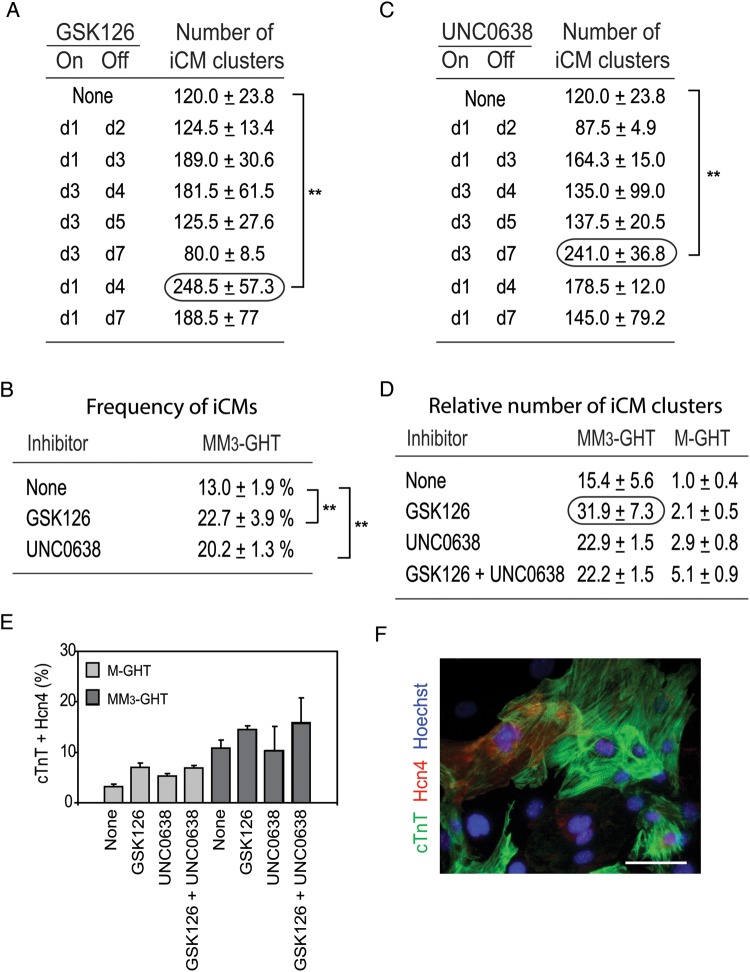Figure 1.
GSK126 and UNC0638 facilitate iCM formation from mouse embryonic fibroblasts with MM3-GHT and M-GHT. (A) The number of iCM clusters obtained with the addition of GSK126 to the culture medium of fibroblasts during iCM formation with MM3-GHT. The day of the addition (On) and removal (Off) of GSK126 is listed on the left; the maximum number of iCM clusters obtained between Day 1 and 14 is listed on the right. A total of 10 000 fibroblasts were seeded in each well of 48-well plates on Day –2 and the total number of iCM clusters was counted in each well. Mean ± SD of three independent experiments is shown. **P < 0.01 (Student's t-test). The highest number of iCM clusters is encircled. (B) Frequency of iCMs on Day 14 after the addion of GSK126 or UNC0638 from Day 1 to 4. The percentage of spontaneously beating cells (iCMs) among more than 500 Hoechst-positive cells is shown. **P < 0.01 (Student's t-test). (C) The number of iCM clusters obtained with the addition of UNC0638 to the culture medium of fibroblasts during iCM formation with MM3-GHT. The highest number of iCM clusters is encircled. **P < 0.01 (Student's t-test). (D) Maximum number of iCM clusters obtained with 1 μM GSK126 and/or 0.25 μM UNC0638 added from Day 1 to 4 relative to the number of iCM clusters obtained with M-GHT without inhibitors (defined as 1.0). The values shown in (A) and (C), and Supplementary material online, Figure S2C (for MM3-GHT), and Supplementary material online, Figure S3A (for M-GHT) were used to calculate these ratios. (E) Frequency of cells double-positive for cardiac troponin T (cTnT) and hyperpolarization-activated cation channel 4 (Hcn4) on Day 14. 1 μM GSK126 and/or 0.25 μM UNC0638 were used from Day 1 to 4. (F) Immunofluorescence staining of cTnT and Hcn4 on Day 14. Cells were transduced with MM3-GHT, and 1 μM GSK126 and 0.25 μM UNC0638 were added from Day 1 to 4. DNA was counterstained with Hoechst 33342. Bars, 50 µm.

